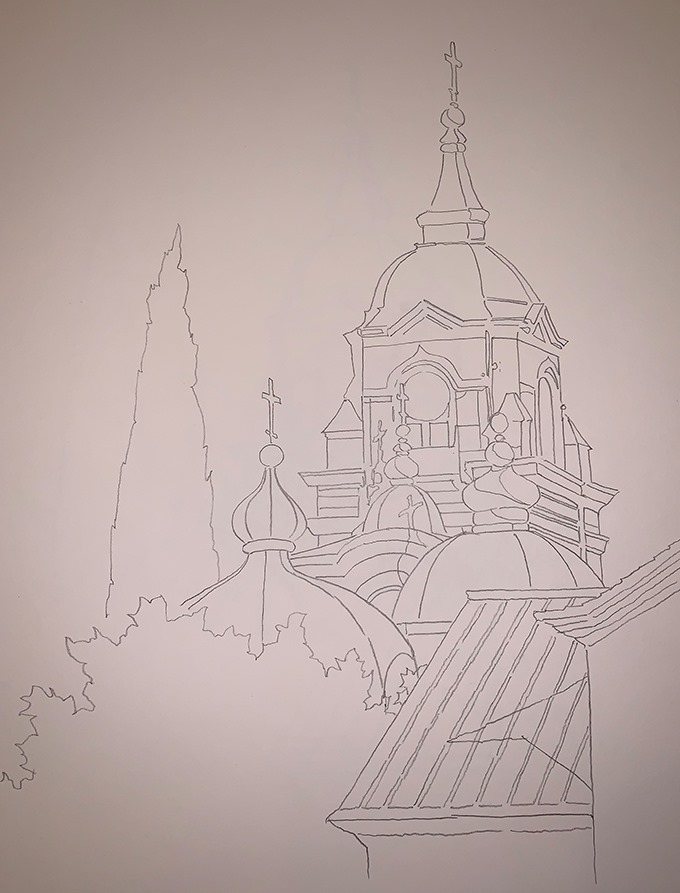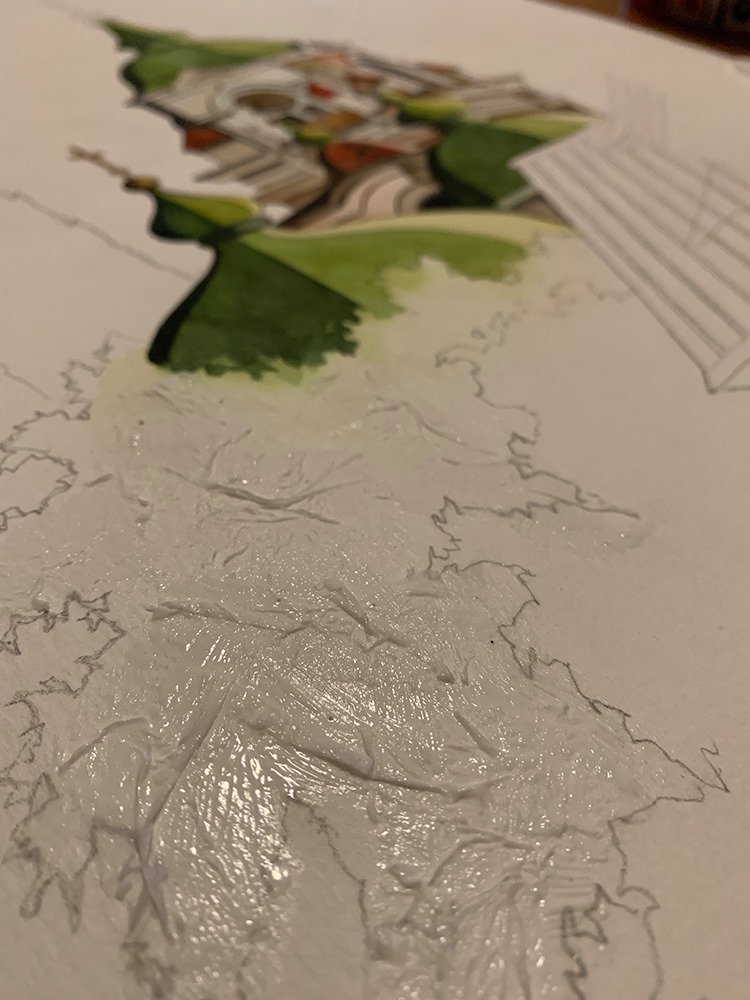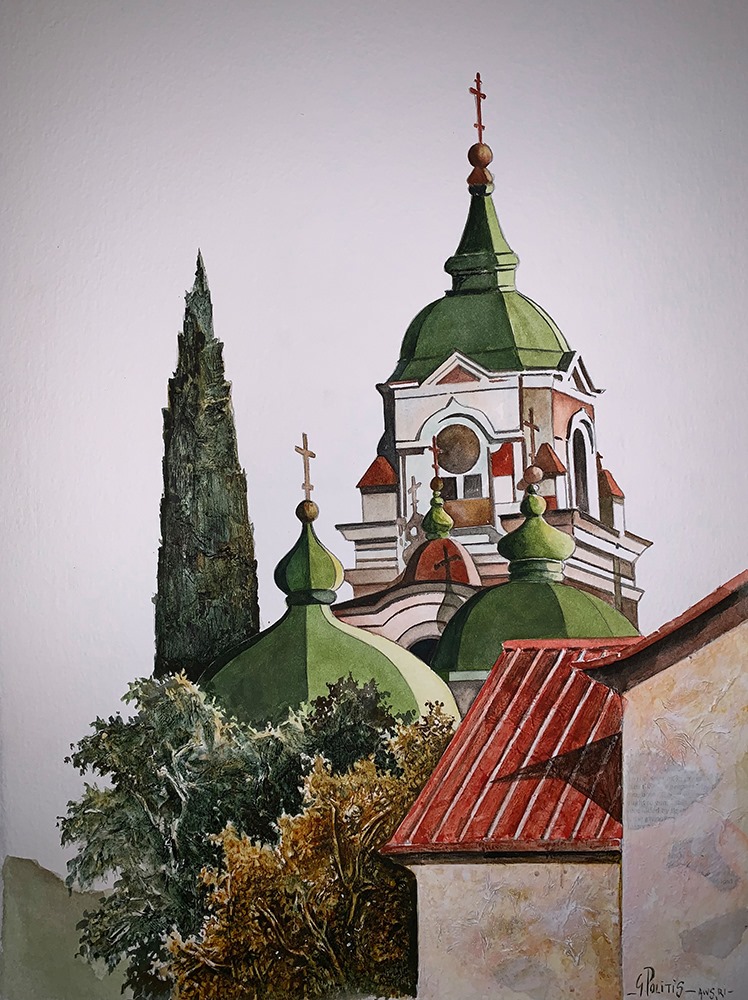
“In Greece, bright sunlight bathes the landscape, creating beautiful contrasts,” says GEORGE POLITIS. “To add interest to my watercolor paintings of traditional white buildings and old churches, I sometimes add elements of collage. I’ve experimented with various types of paper — oriental handmade papers, tissue paper, newspaper, and others — and all have worked.
“I collage some areas to create an uneven surface. When the collaged areas are dry, I paint over them with watercolors (almost drybrush touches, very little water). Thus, I take advantage of the uneven surface of the paper and I am able to gradually build on texture.
“In my process, it is important not to overdo it with too much collage. Also, not every part of the painting should have collage — just some areas, to give more bite to the watercolor.”
Watercolor and Collage Demo
“Churches have intriguing architectural forms that provide great compositional elements,” he continues. “In this demo painting, I use collage in the foreground building and the trees only. You can see how the surface takes on a three-dimensional quality with the addition of collage. I painted on top of the collaged areas with watercolors. On top of the walls, I applied some white acrylic.”



Of course, another way to add texture to your watercolor paintings is by using salt. In “Tuscan Textures: Rich Textures Using Salt,” Judy Morris demonstrates the versatility of watercolor and the subtle differences that combining various types of paint (opaques, transparents, and stains), paper, and salts will achieve.








A wonderful artist and great person!! 🙂